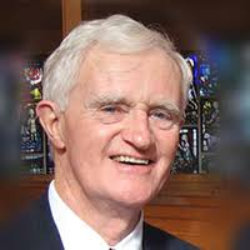ERIC HODGENS. Easter in a Time of Virus.
April 6, 2020
Easter is one of the biggest holidays of the year throughout much of the world. It was originally a Holy Day. But its significance is changing accelerated by COVID-19.
In Western culture Easter have morphed from being a great cultural festival to being just another public holidays. In multicultural societies this applies even more so.
With the widespread shutdown due to the COVID-19 virus, Easter 2020 has been largely shut down. Just an empty break.
For the practising Christian, however, the sense of loss if much greater as communal liturgies are banned. Holy Week is the annual peak of Christian celebration. Palm Sunday celebrates Jesuss triumphal entry into Jerusalem for the fateful week. Christian churches re-visit this theme with processions. Holy Thursday recalls Jesuss Last Supper with his followers. His present-day followers celebrate the Lords Supper the older title given to the Eucharist or Mass. Good Friday mourns the crucifixion of Jesus with its veneration of the cross.
The climax is Easter Sunday. Jesus is risen from death to life. Christians remember Him not as dead, but living, by celebrating the Eucharist and attributing to him the instruction to do this in his memory.
Holy Week therefore is essentially a communal celebration of believers one in faith in Jesus dead, but risen. With COVID-19 blocking communal celebration, believers are at an enormous loss.
The virus and Easter share that eternal theme; life v death. It was that theme that gave rise to Christianity. People lived in an oppressive, unjust, poverty stricken, grubby world. Over the three years of Jesuss public life his message of hope for the ordinary person attracted followers. He announced that Gods Kingdom of peace and justice was coming. The heightened hope of that story was shattered by his death at the hands of the powers that be. It was then that they found an even better hope as they came to believe that Jesus was still alive but in a different way in a different dimension. In Greek they called it the life for the ages ( ), translated into English as Eternal Life. A shrunken translation, but thats what happens when imagination struggles for verbal expression.
The flow-on from Jesuss resurrection is that those who believe in him also share in this different sort of life. They get it when they first come to belief, and it endures beyond the believers earthly death. This reinforces Jesuss idea of Gods coming kingdom of peace and justice par excellence.
Over time, the believers ideas developed. Central to Pauls message in the mid-60s was Jesus risen to new life and the disciples sharing in it.
Then we see stories that developed in various Christian communities over the ensuing decades in the Gospels of Matthew, Mark and Luke written ten or twenty years later than Paul. Johns Gospel emerges round the turn of the century and gives the most extensive attention to Jesuss resurrection and the consequences for the believer. This new life for the ages (eternal life) is a major theme of John. John is a great constructor of pointed stories full of allusive images and links. He believes in this theme so passionately that he has Jesus as the main teacher in many of his stories.
Jesus instructs Nicodemus that gaining this new life is like being born again (Chap 3). The woman at the well is instructed on the living water that Jesus will give (Chap 4) with clear allusions to baptism. The discourse on the Bread of Life in chapter 6 demonstrates that faith in Jesus is the nourishment of this new life, eaten when believers celebrate the Eucharist. The healing of the blind man in chapter 9 ends in a discourse by Jesus on faith as the new insight into this new life. Those without this faith are blind. The story of the raising of Lazarus in chapter 11 is the most dramatic object lesson of faith leading on to life in a new dimension with Jesus being the ultimate orchestrator of the whole phenomenon.
Easter 2020 will go down in history as a dispiriting experience. No sport to follow, no entertainment to attend, no getting away for a break. For church-going Christians and for Jewish families at Passover, it will be desolate. Still, it is good to remember its origins Exodos and Passover for Jews, Resurrection for Christians.
With communal liturgy and extended house gatherings ruled out, it leaves plenty of time to reflect on the Christian meaning of the holiday. A good place to start would be a slow, reflective reading of Johns gospel.
Forced by circumstance to confront deaths threat to the living, the Easter liturgy hymn paints a triumphant scenario.
Mors et vita duello Conflixere mirando. Dux vitae mortuus Regnat vivus.
Death and Life - engaged in momentous conflict. The Life captain dead Now reigns alive.
Eric Hodgens is a Catholic Priest living in retirement. He writes for P&I, International Lo Croix and The Swag.
